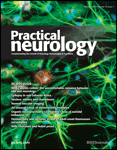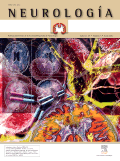
Stroke Research and Treatment
Scope & Guideline
Pioneering open access knowledge in stroke management.
Introduction
Aims and Scopes
- Stroke Prediction and Risk Assessment:
Research focusing on the development and validation of predictive models to assess stroke risk, including the evaluation of clinical scores and biomarkers. - Rehabilitation and Recovery:
Studies examining various rehabilitation techniques and their efficacy in improving functional outcomes post-stroke, including physical therapy, virtual reality, and self-directed home therapy. - Clinical Outcomes and Treatment Efficacy:
Investigations into the clinical outcomes of different treatment modalities for stroke, including thrombolysis, anticoagulant therapy, and surgical interventions. - Epidemiology and Public Health:
Research addressing the epidemiology of stroke, including prevalence, risk factors, and mortality rates, particularly in low-resource settings. - Neurophysiology and Mechanisms of Stroke:
Explorations into the neurophysiological changes following stroke and their implications for treatment and rehabilitation.
Trending and Emerging
- Artificial Intelligence and Machine Learning in Stroke Prediction:
The rise of studies utilizing deep learning and AI for stroke prediction models indicates a trend towards incorporating advanced technology in clinical decision-making. - Telemedicine and Remote Rehabilitation:
Emerging themes around telehealth and remote rehabilitation strategies have gained traction, particularly in response to the COVID-19 pandemic, showcasing the need for adaptable care models. - Patient-Centered Outcomes and Quality of Life:
Recent publications emphasize the importance of patient-reported outcomes and quality of life assessments in stroke recovery, reflecting a holistic approach to treatment. - Multidisciplinary Rehabilitation Approaches:
An increasing focus on multidisciplinary approaches to rehabilitation, integrating various therapeutic modalities and technologies to enhance recovery outcomes.
Declining or Waning
- Traditional Anticoagulation Studies:
Research on traditional anticoagulants like warfarin has decreased, likely due to the increasing focus on newer oral anticoagulants and their comparative effectiveness. - Basic Science Research on Stroke Mechanisms:
Basic science studies investigating the underlying biological mechanisms of stroke appear to be waning, as the journal shifts towards more clinical and applied research. - Longitudinal Studies of Stroke Survivors:
There has been a noticeable reduction in longitudinal studies tracking stroke survivors over time, possibly due to the complexities and costs associated with such research.
Similar Journals

Translational Stroke Research
Exploring breakthroughs at the intersection of cardiology and neurology.Translational Stroke Research, published by Springer, stands at the forefront of the intersection of cardiology, neurology, and neuroscience, specifically focusing on the latest advancements in stroke research from 2010 to 2024. With an impressive impact factor as evidenced by its Q1 rankings in Cardiology and Cardiovascular Medicine, Clinical Neurology, and Neuroscience, this journal is a vital resource for researchers, clinicians, and students alike. It holds significant recognition in the academic community, achieving notable rankings in Scopus, including 15th out of 387 in Cardiology and 17th out of 400 in Clinical Neurology, showcasing its impact and relevance in these critical fields. Although not an open-access journal, it provides access options through institutional subscriptions, thereby facilitating the sharing of influential research that has the potential to shape the mitigation and understanding of stroke and related conditions. Researchers and practitioners seeking to expand their knowledge and engage with cutting-edge findings will find Translational Stroke Research to be an indispensable addition to their scholarly resources.

Annals of Indian Academy of Neurology
Fostering Collaboration in the NeurosciencesAnnals of Indian Academy of Neurology is a premier open access journal dedicated to advancing the field of Neurology, serving as a vital resource for researchers, healthcare professionals, and students since its inception in 2006. Published by the esteemed Wolters Kluwer Medknow Publications, this journal has established itself within the academic community, boasting a Q3 quartile ranking in clinical neurology according to the 2023 category quartiles and a Scopus rank placing it in the 35th percentile among 400 comparable journals. With a focus on clinical advancements and research innovations in neurology, the journal aims to disseminate high-quality and impactful studies that address the complex challenges faced in the neurological landscape, particularly within the Indian context. The open access model ensures that the latest research is readily accessible to a global audience, thereby promoting collaboration and knowledge sharing within the neurosciences.

International Journal of Stroke
Navigating the Future of Stroke Management TogetherThe International Journal of Stroke, published by SAGE PUBLICATIONS LTD, is a leading peer-reviewed journal dedicated to advancing the field of stroke research and clinical practice. Established with a commitment to disseminating high-quality scholarly articles, this journal has rapidly progressed to achieve a prestigious Q1 ranking in both Neurology and Clinical Neurology categories as of 2023. With a remarkably high Scopus rank of #7 among 192 in Neuroscience and #16 among 400 in Clinical Neurology, it places itself firmly in the top 4% of journals in its field, reflecting its significant impact on the academic and clinical landscape. Although it does not currently offer Open Access options, the journal provides a vital platform for researchers and clinicians alike, focusing on innovative treatments, methodologies, and evolving strategies for stroke prevention and recovery. With a publication scope that spans from 2006 to 2024, the International Journal of Stroke continues to foster knowledge exchange and encourage collaboration, making it an essential resource for anyone involved in neurologic healthcare.

Cerebrovascular Diseases Extra
Connecting Academics and Clinicians for Better OutcomesCerebrovascular Diseases Extra is a distinguished open-access journal published by KARGER, operating out of Switzerland since 2011. With ISSN 1664-5456, this journal aims to bridge the gap in knowledge surrounding cerebrovascular diseases, an essential segment of both Cardiology and Cardiovascular Medicine as well as Neurology. Ranked in the third quartile by Scopus for various categories, including Cardiology, Neurology, and Clinical Neurology, it is specially designed for academics, clinicians, and researchers who seek to disseminate and gain insights into the latest advancements and research findings in these critical areas. By embracing open access, it amplifies the reach and impact of its published research, ensuring that vital information is readily accessible to a global audience. As the journal converges towards its targeted years from 2015 to 2024, it remains a pivotal platform for fostering innovative ideas and collaborative research in cerebrovascular health.

PRACTICAL NEUROLOGY
Bridging Research and Practice in NeurologyPRACTICAL NEUROLOGY, published by the esteemed BMJ PUBLISHING GROUP, is a prominent journal in the fields of neurology and medicine, significantly impacting clinical practice since its inception in 2001. With an ISSN of 1474-7758 and an e-ISSN of 1474-7766, this UK-based journal reaches a diverse audience of researchers, clinicians, and students who seek to advance their understanding of neurological conditions and patient care strategies. Ranked in the second quartile (Q2) in both the miscellaneous medicine and clinical neurology categories for 2023, and positioned in the 47th percentile among its peers, PRACTICAL NEUROLOGY provides a platform for high-quality research that bridges the gap between laboratory findings and clinical applications. The journal's commitment to disseminating valuable information through peer-reviewed articles ensures that readers are equipped with the latest insights and practical knowledge necessary for improving outcomes in neurology. While access options are not currently open, the journal remains a vital resource for professionals striving to stay at the forefront of neurological research and clinical practice.

Egyptian Journal of Neurology Psychiatry and Neurosurgery
Advancing Knowledge in Neurology, Psychiatry, and NeurosurgeryEgyptian Journal of Neurology Psychiatry and Neurosurgery, published by Springer, is a premier open-access journal that has been dedicated to advancing the fields of neurology, psychiatry, and neurosurgery since its inception in 2009. With an E-ISSN of 1687-8329, this journal aims to provide a dynamic platform for researchers and clinicians to disseminate their findings, fostering a rich dialogue on the latest developments and innovations within these critical disciplines. With an impactful open-access model adopted since 2018, the journal attracts a global audience, facilitating the exchange of knowledge and ideas across various medical and scientific landscapes. In the 2023 rankings, it holds impressive positions within the Q3 category for Neurology (clinical), Psychiatry and Mental Health, and Surgery, as well as Q4 in Miscellaneous Neuroscience, highlighting its value within the field. As a valuable resource for both budding scholars and seasoned professionals, the Egyptian Journal of Neurology Psychiatry and Neurosurgery offers insights that drive progress in the treatment and understanding of neurological and psychiatric conditions.

NEUROLOGIA
Innovating Neurology: Where Research Meets PracticeNEUROLOGIA, an esteemed journal published by ELSEVIER ESPANA SLU, stands at the forefront of the field of neurology, with a dedicated focus on innovative research and clinical practice since its inception in 1973. As an Open Access journal since 2017, it champions the dissemination of knowledge, allowing researchers, professionals, and students alike to access cutting-edge findings in neurology without barriers. With an impressive Scopus rank of #115 in the clinical neurology category, placing it in the 71st percentile, NEUROLOGIA is categorized as Q3 in both general medicine and clinical neurology, reflecting its impact and relevance in a rapidly evolving field. Based in Barcelona, Spain, the journal's commitment to advancing understanding of neurological conditions is underscored by its rigorous peer-review process and engagement with a global audience. As it continues to publish vital research that shapes clinical practices and informs policy, NEUROLOGIA remains an integral resource for those striving to improve outcomes in neurology.

Journal of Stroke & Cerebrovascular Diseases
Pioneering Knowledge for Better Patient OutcomesJournal of Stroke & Cerebrovascular Diseases, published by ELSEVIER, is a leading international peer-reviewed journal dedicated to advancing the research and understanding of stroke and cerebrovascular disorders. With an impressive impact factor reflective of its rigorous academic standards, this journal is indexed in the highest echelons of medical disciplines, boasting a Q1 classification in Rehabilitation and prominent rankings in related fields. Established in 1991 and converging its focus toward 2024, it serves as a vital resource for researchers and clinicians interested in the complexities and treatment of cerebrovascular conditions. The journal's broad scope spans essential categories such as cardiology, neurology, and surgery, making significant contributions that enhance clinical practices and patient outcomes. For researchers, professionals, and students alike, the Journal of Stroke & Cerebrovascular Diseases is not just a publication but a critical platform for sharing innovative findings and fostering impactful discussions within the medical community.

STROKE
Elevating Standards in Neurology and Cardiology ResearchSTROKE is a premier academic journal published by Lippincott Williams & Wilkins, dedicated to advancing the fields of neurology, cardiology, and specialized nursing. With an impressive impact factor and consistently ranked in the Q1 category across multiple disciplines—such as Advanced and Specialized Nursing, Cardiology, and Neurology—this journal serves as a crucial platform for researchers and healthcare professionals. It spans a rich historical context from 1970 to 2024, offering invaluable insights into stroke research and related cerebral vascular issues. The journal is committed to disseminating high-quality research that informs clinical practices and guides policy-making in public health. With a focus on empirical studies and clinical trials, STROKE stands as an essential resource for those invested in the complexities of neurological interventions and cardiovascular health. Ensure your access to this influential publication as it shapes the future of medical science and patient care.

NEUROLOGY
Pioneering insights in the realm of neurology.NEUROLOGY, published by Lippincott Williams & Wilkins, stands as a premier journal in the field of neurology, holding an esteemed Q1 category ranking in clinical neurology as of 2023. Established in 1951, this journal has been a critical resource for the dissemination of cutting-edge research and clinical advancements, with an impressive Scopus rank of 24 out of 400, placing it in the 94th percentile among its peers. NEUROLOGY serves as a vital platform for neurologists, researchers, and medical professionals seeking to stay abreast of the latest findings and innovations in the treatment and understanding of neurological disorders. With its rigorous peer-review process and commitment to excellence, NEUROLOGY remains essential reading for all individuals dedicated to advancing the science and practice of neurology, contributing significantly to the ongoing dialogue in this vital area of medicine.